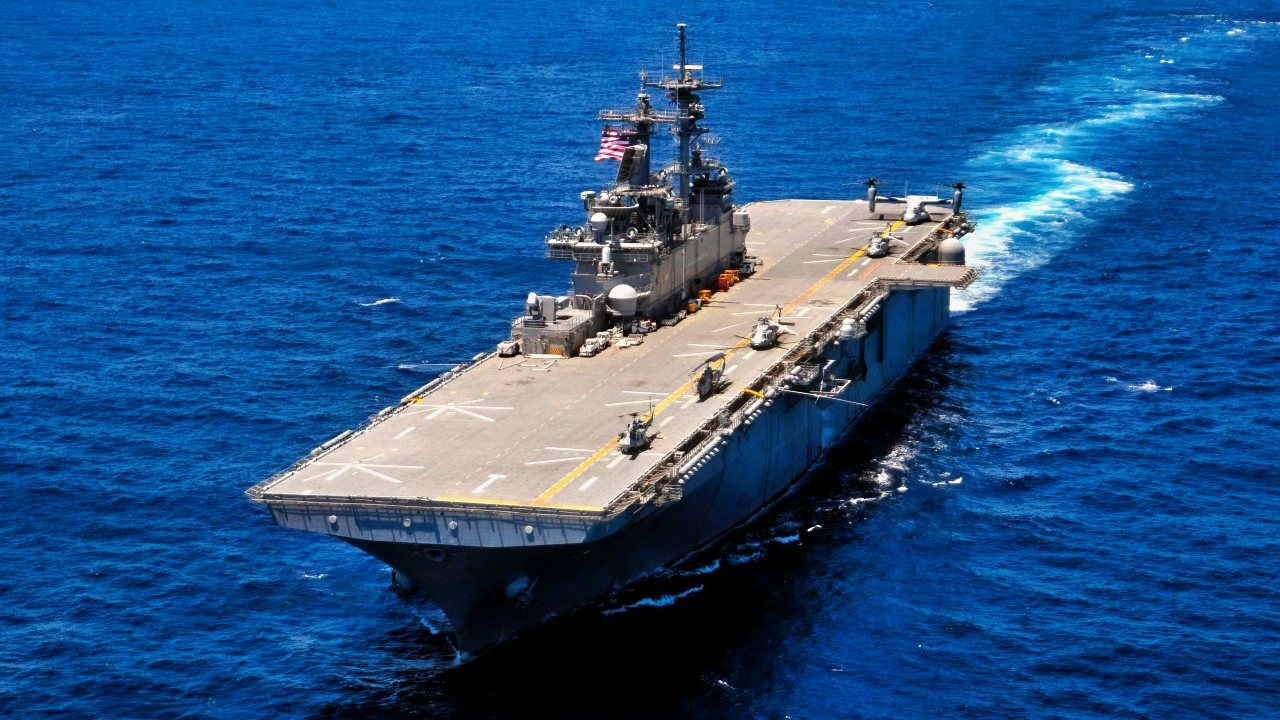The U.S. Navy Just Ran Out of Pants
The U.S. Navy is facing an unusual and troubling situation: a shortage of pants for the Navy Working Uniform (NWU), with no new stock expected until October. This shortage, attributed to "vendor issues" managed by the Defense Logistics Agency (DLA), highlights broader concerns about the state of U.S. military logistics.
Summary and Key Points: The U.S. Navy is facing an unusual and troubling situation: a shortage of pants for the Navy Working Uniform (NWU), with no new stock expected until October. This shortage, attributed to "vendor issues" managed by the Defense Logistics Agency (DLA), highlights broader concerns about the state of U.S. military logistics.
-Similar shortages have affected the Marine Corps, raising questions about the readiness and efficiency of the defense supply chain.
-The problem seems emblematic of larger systemic issues, including a weakened defense industrial base and overall logistical challenges, drawing uncomfortable comparisons to the declining Soviet military.
-The lack of uniform pants may be a small issue, but it signals deeper problems that could affect U.S. military effectiveness in more critical areas.
The U.S. Navy Won’t Have Pants for Two Months
No shirt, no shoes, no service. Those are the standard rules whenever dining at most establishments. But what about no pants? Well, American sailors will soon be forced to ask these incisive queries as they rush into the world’s hotspots because, according to Military.com, “service officials confirmed Friday that pants for the Navy Working Uniform, or NWU, the go-to uniform for most sailors, are out of stock at Navy Exchanges.”
Here’s the kicker, though: No new NWU pants will be available until sometime in October.
The issue comes down to the Defense Logistics Agency (DLA) that manages the procurement and distribution of things like Navy uniforms. DLA spokespeople claimed it was ambiguous “vendor issues” that explain the odd shortage. The Marine Corps went through similar shortages for two years with its woodland camouflage uniforms.
Is This Part of a Larger Problem?
On the one hand, you might chalk this up to classic big government bureaucracies getting things wrong.
On the other hand, the uniforms in question are among the most commonly used by every member of the U.S. Navy. That the government simply ran out – and won’t have any for two months – is astounding. That the Marine Corps was made to do without its ubiquitous woodland camo garb for two years is even more shocking.
The United States purports to be the world’s sole remaining superpower, with a military capable of dominating any region of the world. Yet it can’t seem to supply proper combat attire for its personnel. Normally, this is a byproduct of being on the losing side of a major war. But in America’s military, we are told that it’s just your typical bureaucratic SNAFU.
Perhaps there is something more to this, though, than just government malfeasance. After all, the US military finds itself in its most reduced state since the Interwar Years. The Navy lacks an adequate number of warships to meet its global responsibilities. The Army and Marine Corps are woefully small. And the Air Force is struggling with significant reductions in the size of its air fleet – at the same time it is retiring warbirds faster than they can be replaced.
While America may not be fighting a major world war, from a logistical standpoint, it sure looks like it is. This is to say nothing of the fact that the country’s once-mighty defense industrial base is sclerotic. Despite the increased funding to meet the urgent needs of the Ukrainian and Mideast battlefields, the U.S. defense-industrial base is apparently incapable of keeping its production of military equipment at a sustainable rate.
COVID-19 and the subsequent lockdowns highlighted just how brittle America’s overall supply chains were. They have never really healed.
Here’s How the Leadership Crisis is Affecting Things in the US
Meanwhile, the U.S. government is poorly led. Currently, there’s a succession crisis afflicting the Biden administration. While the forty-sixth president remains nominally in charge, he is spending his time more on Rehoboth Beach than in the White House—even as the Middle East teeters on the brink of a world war, while China appears poised to take direct military action against its neighbors, and as Russia prepares to drop the final hammer down upon the Ukrainians.
Biden’s number two, Vice-President Kamala Harris, is apparently too busy to take the reins at this critical juncture for our country. She’s campaigning to be Biden’s replacement. Republican Speaker of the House Mike Johnson of Louisiana, the third-in-line to the presidency, is also no help. After all, no one has seen or heard from the Speaker since the Democrats ousted President Biden as their presidential nominee.

No Pants, No Victory
All this is to say that a shortage of common uniform trousers, on the heels of the Marines primary camo uniform being unavailable for two years, might be more than just an “oopsie-daisy” on the part of the DLA. It might be symptomatic of much larger problems afflicting our country. Indeed, to the rest of the world, the United States likely looks downright Soviet in its current sociopolitical disposition. Uniform shortages were a mainstay of the declining Soviet Red Army in its final decade, too.
So America’s sailors have no pants available for two months.
What happens when there isn’t enough ammunition for their onboard close-in weapons defense systems? Or when there aren’t enough torpedoes for the fleet? Because at this rate, that’s precisely where we’re heading. And it’s all happening at precisely the moment we need reliable and stable supply chains the most.
No pants might be symptomatic of no victory for the Navy.
Author Experience and Expertise: Brandon J. Weichert
Brandon J. Weichert, a National Interest national security analyst, is a former Congressional staffer and geopolitical analyst who is a contributor at The Washington Times, the Asia Times, and The-Pipeline. He is the author of Winning Space: How America Remains a Superpower, Biohacked: China’s Race to Control Life, and The Shadow War: Iran’s Quest for Supremacy. His next book, A Disaster of Our Own Making: How the West Lost Ukraine, is due October 22 from Encounter Books. Weichert can be followed via Twitter @WeTheBrandon.
All images on page Shutterstock.
From the Vault
Russia Freaked Out: Why the U.S. Navy 'Unretired' the Iowa-Class Battleships
Battleship vs. Battlecruiser: Iowa-Class vs. Russia's Kirov-Class (Who Wins?)


